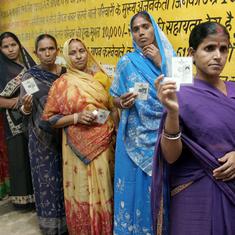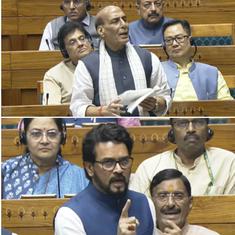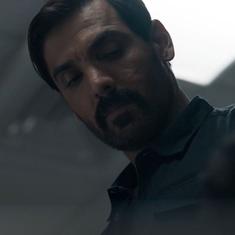A news report on July 2 said that Chhota Shakeel, an underworld gangster and Ibrahim’s lieutenant, had tried unsuccessfully to eliminate Rajan. A senior police officer was sceptical about the report, but it nevertheless evoked memories of a time when underworld gangs battled for control over different illegal trades in Mumbai.
“Over the past 10 to 12 years, the underworld has lost its sheen,” said a former Mumbai police commissioner who was in charge of the city when the underworld was at its peak and is credited with bringing about its downfall but did not wish to be named. “Unless there is concrete proof, I would be sceptical of such stories. This could well be an attempt by the underworld to hit the headlines again and remind the people of their existence.”
Because these gangs run extortion rackets, which work on fear, they benefit from being in the news. Whatever the truth about this incident, the underworld’s manoeuvres and rivalries still resonate in the city’s consciousness. For despite the hunt for each other’s blood, which has spanned continents and decades, both Chhota Rajan, and his arch nemesis, Dawood Ibrahim, have managed to live to fight another day.
Dawood, now thought to be based in Karachi, was once the most feared gangster in Mumbai, who held sway over various illicit trades. Dawood orchestrated a series of bomb blasts in Mumbai in 1993, following Hindu-Muslim riots sparked by the demolition of the Babri Masjid. After this, Rajan broke with Dawood, and their enmity has continued since then.
History of violence
The closest that these attempts ever got was when Dawood’s men managed to get near Rajan at his aide’s residence in Bangkok in 2000. Dawood’s D-Company, as his group is known, managed to get so close to eliminating his one-time lieutenant that some news outlets carried stories saying Rajan had died in the attack.
The biggest challenge when it comes to eliminating an underworld rival is sniffing out his location. Only after this can the plan and the logistics be worked out. Dawood’s man, Sharad Shetty, tracked Rajan down, following which Shakeel hatched a plan to bump him off. (Shetty was eventually killed in a revenge attack by Rajan’s men.) Three shooters, including a man called Munna Zingada, were sent to Bangkok from Mumbai to eliminate Rajan.
Posing as pizza delivery boys, or courier boys according to some accounts, the trio barged into a room where Rajan was partying with his men. While some of his men were killed, Rajan managed to escape with one bullet injury and was admitted to Samitivej Sukhumvit Hospital in Bangkok, according to widely reported accounts.
This created another problem for Rajan because he came under the custody of the Thai police and he feared that they would extradite him to India. But two of his associates, Santosh Shetty, who was extradited to Indian in 2011, and Bharat Nepali, who was shot dead in 2011 (it is still not clear by whom), engineered his escape. They allegedly got the watchman of the hospital drunk, and using mountaineering equipment got Rajan out of the hospital, which was being guarded around the clock by Thai authorities.
From there, by most accounts, Rajan fled to Europe. “Ironically, before Bangkok, Rajan was in Australia, and we had got a court order against him, following which he escaped to Bangkok,” said an IPS officer, requesting anonymity. Australia is the same place where Shakeel planned his latest attack on Rajan.
Parting ways
According to some accounts, the first attempt on Rajan’s life came, in fact, around the time he was going to leave Dawood’s gang. Dawood had invited Rajan for a meeting on a yacht, intending to finish him off. Rajan, however, got wind of the plot and fled from there to form his own gang.
Rajan, too, had planned several attempts on Dawood’s life. In one of his well-known attempts, he had a team comprising Fareed Tanashah, Vicky Malhotra and Bunty Pandey amongst others that entered Karachi in various guises in 1998. Indian intelligence agencies that had been on the lookout for Dawood for a long time knew of this attempt, according to newspaper reports. The plot to capture and eliminate Dawood, which inspired Bollywood movies like D-Day, however, had to be called off because the D-Company got wind of it. Eventually it was with some effort that Rajan ensured that his team returned safely to India from Karachi via Nepal.
Rajan has made no secret about the number of times he has tried to kill Dawood. In one interview, he claimed he had made eight attempts, most of them in 1997 and 1998, but they all came to naught. However, while the duo have not been able to get each other bumped off, this has never come in the way of them going after their gang members as a way of sending “messages” to each other.
Soon after Dawood engineered the bomb blasts in Mumbai, Rajan parted ways with him. Dawood then began turf wars in Mumbai, a piece of pie that both parties were interested in.
Era of encounters
Dawood got people who were paying protection money to Rajan bumped off. Rajan retaliated by getting Dawood’s men in Mumbai killed. It was then that the tit-for-tat game began that would lead to a spree of killings in Mumbai.
But the killing spree was not restricted to Mumbai. One of the biggest ‘scalps’ that Rajan boasted about was that of Mirza Dilshad Beg, then a Nepalese member of parliament and a former minister who was allegedly a point man for Dawood in Nepal. In addition to this, in a bid to create an image of himself as a ‘patriotic don’, Rajan went after the 1993 blast accused, such as Saleem Kurla in April 1998.
In the late 1990s, gangs began using encounter specialists to get members of rival gangs bumped off. These specialists were policemen who had been instructed by their superiors to go aggressively after the underworld, which had become a menace in Mumbai in the late 1990s. Many gangsters were then killed in encounters. Rajan was also known to be passing on information about Dawood to India’s intelligence agencies to further weaken his network.
Over the past decade, however, the underworld does not cast its shadow over the city the way it did in the 1990s. But with more aggressive laws and a strong crackdown by the police, it became more risky for gangsters to continue their activities in such an open manner. Many of them went abroad and began controlling their activities from outside the country. Their rivalries also moved abroad.










